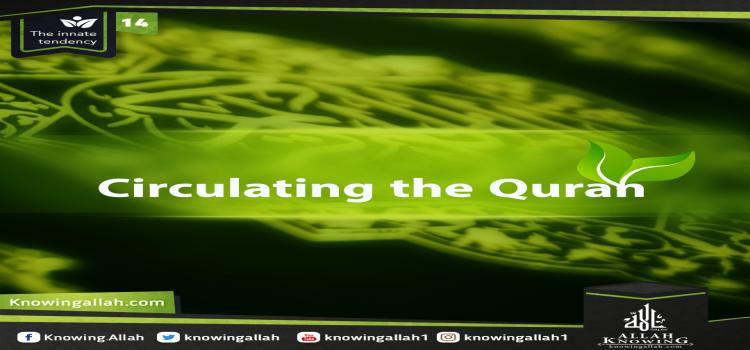THE ERA OF THE PROPHET
THE ERA OF THE PROPHET
During the Prophet’s era, as in the modern era, people may be divided into two main groups with respect to their preparedness to receive the message:
1. Those searching for the truth who are dissatisfied with the religion followed by their contemporaries, and
2. Those not searching. This second group may be further divided into those not searching because they are content with their religion and those not searching because they have rejected belief in God. The second group has been a minority throughout history.
The first group also consistently represented a minority as the majority of people tend to accept the cultural norms of society without question. In the Prophet’s time, that minority was called the hunafaa’ . Most of them converted to Islam as soon as the message reached them. A few, due to tribal jealousies rejected the message. Thus, the first group responded to the clear truth of revelation. On the other hand, the second group based their response on their trust in the Prophet’s (pbuh) character. They knew him to be truthful and honest throughout his life, therefore, there was not reason to doubt his claim to Prophethood.
1. The Role Model
The first converts were from the Prophet’s household
Khadijah bint Khuwaylid
‘Ali ibn Abi Talib
Zayd ibn Harithah
They were followed by the Prophet’s close friend and confidant, Abu Bakr.
Their conversion was due to their intimate contact with the Prophet (pbuh) and their unquestioned belief in him his truthfulness due their personal experience with him. This reason for conversion may be called the “role model.”
2. Da’wah to Islamic Monotheism (Tawheed)
The next five converts embraced Islam as a result of Abu Bakr’s invitation.
‘Uthman ibn ‘Affan
Az-Zubayr ibn al- ‘Awwam
‘Abdur-Rahmaan ibn ‘Awf
Sa ‘ad ibn Abi Waqqas
Talhah ibn ‘Ubaydullah
Their conversion was a result of the message being taken to them.8 This reason may be generally called the “Da’wah”
3. Truth Seekers
Among the converts was ‘Amr ibn ‘Absah who had rejected the idolatry of his people and sought the truth. Like him was Salman al-Farisi who journeyed from Zoroastrianism, Judaism, Christianity to Islam. The reason for the conversion of these companions and others like them may be called “truth seekers”
4. Reading the Qur’an
‘Umar ibn al-Khattab’s conversion is authentically narrated as a result of his hearing the Prophet (pbuh) recite Surah al-Haaqqah.9 The Najashi’s was due to his hearing Surah Maryam. These and others like them may be referred under the general reason of “Reading the Qur’an”.
5. Marriage
Abu Talhah al-Ansari was offered a dowry of accepting Islam by Umm Sulaym (Mother of Anas ibn Maalik). She also gave him logical da’wah concerning his idol worship.
Abul-‘Aas who was married to the Prophet’s daughter, Zaynab, was separated from her by the Prophet (pbuh) and was later ransomed from among the prisoners of Badr by Zaynad. In both of these cases, marriage to a Muslim woman was a factor in their conversions.
The following eleven surveys of reasons for conversion were done in April, 2001, in different parts of the world. From the surveys, it is evident that the above-mentioned factors continue to be the main reasons for people accepting Islam in the 21st century.
It should be noted that in the Middle East, one of the biggest factors in conversion is the religious example of employers. This is especially the case of Far and Near-Eastern women working as domestic helpers in Arab homes. This is the role model reason which constituted the first major reason for converts in the Prophet’s era. See surveys 2 and 3 of Discover Islam /Bahrain and QCPI of Qatar. In the West, living with Muslims is a minor factor because contact with Muslims is much less frequent and Westerners do not usually work as domestic helpers in Arab homes. However, the role model reason is still significant in so far as it comes from contact with Muslims on the job, in universities, in the neighborhood, etc. See survey 6 of the convert community in Detroit, Michigan, USA, where the majority of converts were introduced to Islam by someone trusted.
From the survey results it appears that the most critical conversion factor in the West seems to be the availability of information.
In India, where the caste system is dominant, the oppressed classes find in Islam social justice and respect. Consequently, as indicated in survey 7 Islamic justice and equality is among the biggest attractions.


